#types of kidney function tests
Explore tagged Tumblr posts
Text
0 notes
Text
Shimmer thoughts - Analysis on Shimmer Purpose > Creation > Variants

♡˚ crediting people from twitter who helped me so much with this : @omniscient_she @ethnicallymoral @hartbrekprince @Darkroastdreams

Purpose
Initial goals of Shimmer ⤷create a substance that could provide strength and power ⤷Become a superior medicinal-healing drug
Later goals of Shimmer as the story progress: ⤷permanently enhance the human body and mind
Creation:
Shimmer was created by Singed using glowing purple flowers and biological experiments, including a rare regenerative creature named Rio. ● Flower ⤷Observed to grow in a cave and seen to be growing in Silco/Singed’s hideout in the canary as per S1E1 (could be the cold, dark, damp nature of the location) ⤷combustive when it comes to contact with fire
● Rio ⤷a unique, rare creature that possesses remarkable regenerative abilities (ArcaneWiki) Singed stated the following about Rio: S1E6 mark: 39:28 - “she’s a rare mutation I cultivated” S1E6 mark 31:52 - “The mutation must survive”
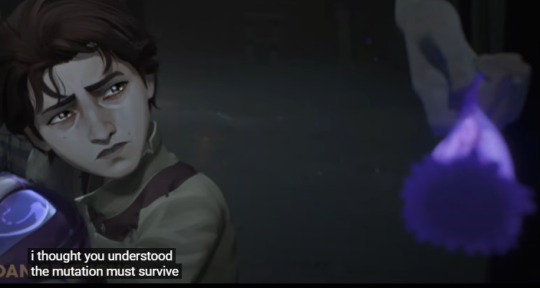
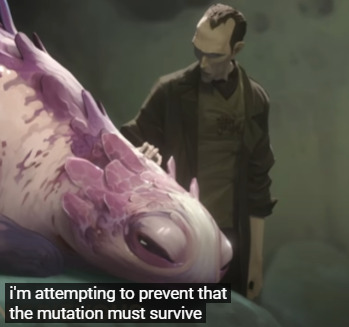




There’s no concrete evidence if Shimmer is made solely from either Rio or the flower, only that they are alluded to as the base foundations of the drug. Singed, with the help of young Viktor, was initially feeding Rio the flowers which may be the cause of mutation, therefore Rio is technically “man made” and not an organically occurring mutation.
Still with the tubes tied to Rio glowing with the same purple essence of the flowers on the later part of the show, we can infer that Shimmer may be made by glowing flowers passing through Rio’s DNA system.
“Shimmer could have been made by passing nectar (or a form of transformed sap) from the flowers through Rio's organs. Through the organ's natural processing (stomachs digest, kidneys remove waste and extra liquid, livers produce bile and pancreas store insulin...) the sap turns into shimmer. Or at least a proto-shimmer that is then refined by Singed Perhaps also the Waverider microbiome within their body contains specific bacteria that break down the proteins and such contained within the flower in a different way. So it's not only the mechanical function of the organs but also the chemical function of the microbiome”
Naïa, First Chancellor's Archivist @omniscient_she
Variants:
As revealed by Singed he developed Shimmer variants, some of which are more advanced than others.v. ArcaneWiki
The existence of different variants and purity levels (even expiration) as per @Darkroastdreams thread could mean Shimmer divided as:
Variant A - For productions and distribution
Street Shimmer • Who uses it: Silco’s foot soldiers, goons, thug enforcers. • Effects: Enhances strength, pain tolerance, durability, tissue regeneration, possibly nervous system repair, resuscitation from near-death cases (makes you a walking tank) • Side effects: . Short-term: Mutations, temporary growth in size, cognitive degeneration, and aggression. Long-term: Highly addictive; physical deformities such as large tumors protruding from the skin; progressive degeneration of skin and muscle tissue. • Distribution: Mass-produced. Cheap. Dangerous. This is the version running Zaun’s black market economy.




Chembaron-grade • Who uses it: Sevika, Silco, Silco’s inner circle, possibly Singed’s own test subjects. • Effects: Similar to street shimmer, but targeted—such as enhancing strength, regeneration, durability—without major side effects (e.g., physical mutation). • Upgrades: Combined with technology (e.g., Sevika’s arm) or delivered via implants to ensure the user receives the proper dosage. • Side effects: Still risky, but shows longer-term integration.


Quoting from thread : “There are likely different purities of shimmer available for purchase on the streets of Zaun, with the highest purity coming directly from Singed (such as the type used by Silco and to revive Jinx as well as what Viktor was most likely given) and lower purities sold on the street as an illegal drug.”
DarkroastDepresso @Darkroastdreams
Note : The testing phase from S1A1 looks more like Street Shimmer as it caused Dekard to physically change, if a several drops caused physical and increased aggression to a rat then application must be equal to body weight of the user? several drop: rat/1 bottle: teenage human. We can then reason that when Caitlyn used Street Shimmer on Vi, the single drop administered was a low enough dose to mitigate the usual side effects.
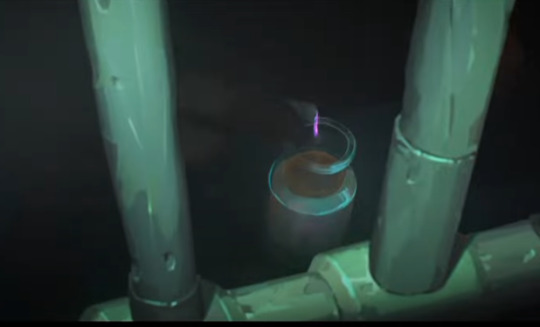
Variant B - Singed’s personal research, produced personally on his lab
Prototype • Who uses it: Jinx, speculated: Singed and Warwick during his hibernation phase. • Effects: altered physiology, strength, longevity, total body mutation, heightened senses. • Thoughts : we can speculate that Jinx is the first successful human test when Singed was trying to resuscitate her.
“This appears to be a mix of variants that made Jinx the most successful experiment, preserving her through near-death resuscitation while incorporating a controlled combat strain. It aligns with Singed’s goal of reviving his daughter in a stable, powerful form. The idea that she “became Shimmer” suggests a perfected biological mutation: a proof of concept for a sentient, controllable Shimmer being without the side effects seen in Warwick.”
@ethnicallymoral
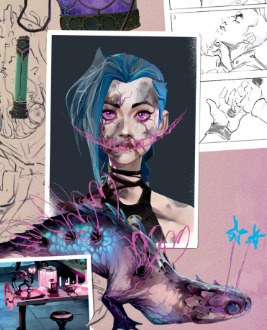
Beta (used to combine with Hextech) • Who uses it: Viktor and speculated: Warwick during his hibernation phase. • Effects: Catalyst, longevity, pain suppression, durability, tissue regeneration, possibly nervous system repair • Goal: sustain Viktor's life to continue his research, by accelerating assisting a fusion of Shimmer and Hextech
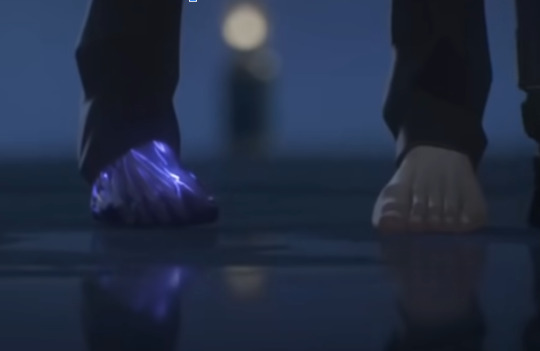


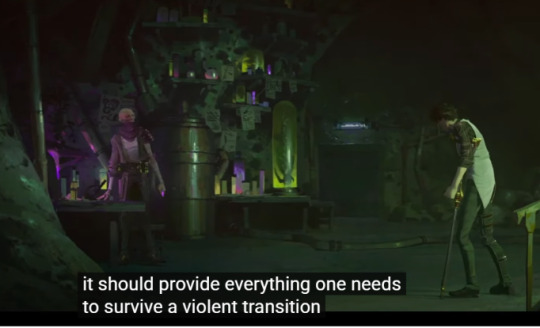
Apex shimmer • most advanced and potent form of Shimmer—refined beyond the unstable • Who uses it: Singed and Warwick • Effects: Physical enhancement (boosts strength, speed, and resilience), life preservation (slows or halts degeneration), biological evolution. • Used for: stabilizing Warwick enough to be able to awaken him, slows degeneration by using it on Oriana and Singed • Risk: Unknown however it seems to only be suitable for individuals with strong willpower, intellect, or specific biological conditions.


Variants structure provided and assisted by @ethnicallymoral // els
< END PERSONAL THINK THOUGHT AFTER THIS >

Is a drop enough to mutate only Silco’s eye?
Unsure, we can speculate that he must have had other side effects aside from his eye. I’m inclined to believe that Silco must have had other changes in his body, which could be his lungs being able to withstand a greenhouse filled with a leaking tank of the Grey. Not only is Silco a heavy smoker but he also worked in the mines infested with the Grey, which could have caused long term lung damage, but we never see Silco cough nor does he exhibit any lung issues.
Also, we first have to know what variant he had been dozing on and if he switched to the purified healing variant once Singed is able to concoct other variations of Shimmer.
Have we ever thought of the possibility that silco is the first human test of Singed due to the nature of his injuries? I have.
Does it affect Silco’s cum quality? I.e. taste, potency, color A: Because Silco seems to have been using the Variant A - street shimmer from s1A1 and could have been using it since the prototype version we can guess that there maybe changes to his body, if not externally like his eye then internally. We can also see Silco's tear as violet in here.

2. Does it help with his bedroom performance (Physical endurance during sex AND Shorter refractory period) Again Again there maybe changes to his body if not externally like his eye then internally. Despite his age, injuries and past history (starvation, exposure to the Gray) we can see Silco crashout as him having exhibiting strength, this could point out that : Yes, Silco does have stamina No proof in regards to refractory period
3. Does Shimmer give him erectile dysfunction? Given that one of shimmer's main goal and coveted effects are tissue regeneration, possibly nervous system repair, AKA HEALING AND SLOWING/HALTING DEGENERATION and Silco's long term use, then we can reason that he has no erectile dysfunction
#silco arcane#silco#singed arcane#vander arcane#viktor arcane#shimmer#shimmer arcane#arcane silco#jinx arcane#arcane thoughts#arcane#sevika arcane#sevika#corin reveck#singed#arcane viktor#silco and jinx#isha's analysis
86 notes
·
View notes
Text

It's so tough watching dogs get older... Flynn's had to start a new medication today & oh boy, I'm stressing out about it - hopefully unnecessarily! More under the cut - discussions of blood tests, urine samples, kidney issues, medication...
*UPDATE* 20th Dec also under the cut!!
Longtime followers may remember Flynnie only has 1 kidney. The other one was removed when he was 2.5 yrs old but it'd been effectively non-functional from when he was around 5 months old (due to an abscess forming in it). So for the vast majority of his life, Flynn's had 1 functioning kidney & it's worked like a champ! But. At 11.5 years old, age is perhaps catching up with him. Flynn's last blood test was done a couple of weeks ago & overall, his kidney function is, to use the vet's description: "great". However... for over a year now, we've been monitoring an issue with Flynn's urine. He has protein in his pee & that's not great - it means the fine structures in his kidney aren't filtering properly & as this issue continues, it will inevitably cause kidney damage. So, while Flynn does not currently have "chronic kidney disease"... it's a concern, particularly given at best his kidney function is 50% of a normal dog.
Unfortunately, Flynn's UPC level (the measurement of protein in urine) has risen recently. Not scarily high but vets feel drugs are now needed - especially as, although bloods were generally good, Flynn's blood albumin level (protein in the blood) was really quite low - indicating the loss in his urine is having an impact. He's already on a renal diet, so trying meds is the next step.
Anyway, the drugs are ACE-inhibitors - same stuff as humans take for high BP. The hope is they'll lower blood pressure in the kidney & that will help reduce protein loss. Sadly, meds won't fix the problem 100%, the aim is just to slow things down. I do think starting Flynn on the meds is for the best but I'm stressed because there's a small chance it could actually make things worse. Very occasionally dogs don't react well to ACE-inhibitors & the meds actually cause kidney damage. I'm going to monitor him closely & he'll be having bloods/urine rechecked in a couple of weeks but it's scary! Also... we've had to stop giving Flynn regular NSAIDs for his arthritis pain. He can take paracetamol (tylenol) but regularly combining ACE-inhibitors with NSAIDs increases risk of kidney damage. Once he's hopefully stable on the ACE-inhibitors, I'll ask about trying alternative painkillers - but I don't want to start him on multiple drugs at once. It's tough trying to juggle multiple different factors! I'm aware I'm more twitchy than I used to be about all this because in May 2023, Flynn had an appalling reaction to Librela (actually, that was when we picked up on the issue with his pee). Librela is a new-ish medication & usually a safe way to treat arthritic pain in dogs. It's given as a monthly injection. Flynn had 1 dose & unfortunately, it made him very sick. His bloods were checked a week prior & everything looked good - but within days of the injection, his kidney, liver & pancreas were struggling & he suffered kidney disease type symptoms. Luckily, everything - except the high protein in his urine - fully resolved within 2-3 months but the entire ordeal was awful & logical or not, I felt so guilty about it. I do not want to go through that again!
Anyway, if you've made it this far - thank you! I just needed to write my thoughts down really! For now all I can do is monitor Flynn until he has his next blood test, hope the ACE-inhibitors work well & help his kidney stay relatively healthy & that we can then also find a safe, effective way to keep him physically comfortable for a long time to come. It's just hard because there are no perfect solutions...
*THE UPDATE* Soo… Flynn's been on the new ACE-inhibitor for about 2.5 weeks now. He went in for a blood test on Tuesday & we also checked his urine this week. I got the results today (Dec 20th)… Good news is that his blood work is OK & his worryingly low blood protein level has risen. However… we started him on the new meds specifically to LOWER the amount of protein in his urine & unfortunately, his UPC level has actually gone UP!!! It's higher than ever… It's possible this is a blip, or the meds haven't had time to improve this issue but very occasionally, dogs react badly to it & it can actually reduce kidney function (& increase protein in urine) instead of helping. Anyway, physically, Flynn seems to feeling alright in himself, so that's something. He's actually coping very well off the NSAIDs - paracetamol/tylenol is keeping him comfortable enough. We've been told to carry on with the ACE-inhibitors for now & Flynn's got to go have his blood pressure checked on Dec 30th & I will request they check his pee again then. Guess if he's got worse, we may need to change the type of meds he takes at that point. I am just so stressed - really hoping things have improved by the time we go back to the vets!Gah!!! Pets… why do they get problems over the holidays?!! Think good thoughts for Flynnie!
117 notes
·
View notes
Text
⚕️Interpreting Gallifreyan Bloodwork
This guide is for use on Gallifreyans and Time Lords only. Always seek your human advice from human health providers.
🩸 How Gallifreyan Bloodwork Differs from Humans
Gallifreyan blood is vastly different from human blood due to triple-helix DNA, dual-heart circulation, and the presence of artron and lindos compounds. While some human blood tests can provide limited insights, many are ineffective, requiring Gallifreyan-specific diagnostics for accurate interpretation.
🧪 Blood Tests & Their Efficacy
Human Tests:
Venous Blood Gas (VBG) (Acid-base balance, oxygenation) ✅ Useful for pH, glucose, electrolytes, lactate.
Arterial Blood Gas (ABG) (Oxygenation accuracy) ❌ No advantage over VBG in Gallifreyan physiology.
Full Blood Count (FBC) (RBCs, WBCs, platelets) ❌ Useless—Gallifreyan cells do not match human equivalents.
Urea & Electrolytes (U&E) (Kidney function) ✅ Detects chloride (Cl⁻), creatinine, magnesium (Mg²⁺), potassium (K⁺), sodium (Na⁺).
Troponin (Heart damage/disease detection) ✅ Detects Gallifreyan troponin levels to assess myocardial strain.
Brain Natriuretic Peptide (BNP) (Heart failure monitoring) ✅ Detects NT-proBNP, useful for evaluating dual-heart strain.
Group & Save (G&S) (Blood typing for transfusions) ❌ Useless—Gallifreyan blood groups are House-specific and not compatible across Houses.
Liver Function Test (LFT) (Liver enzyme assessment) ✅ Detects ALP, GGT, ALT, AST to monitor liver health, particularly in relation to lindos metabolism and toxin exposure.
International Normalised Ratio (INR) (Clotting rate) ❌ Useless—Gallifreyan clotting mechanisms differ from human systems.
Specialised Gallifreyan Tests:
Z-Cell Count (Immune response monitoring) ✅ Essential for assessing general and specific immune function.
Artron Levels (Time-energy exposure, immune activation, healing response) ✅ Essential for assessing infection, injury healing, psionic function, and Time Vortex exposure.
Lindos Levels (Regenerative activity indicator) ✅ Detectable only before, during, or after regeneration. Presence at other times is abnormal and suggests systemic failure or forced regeneration attempts.
House Blood Testing (Genetic matching, transfusion compatibility) ✅ Detects House-specific protein markers, ensuring safe transfusions.
Platelet & Clotting Factors (Coagulation health, haemodynamic stability) ✅ Excess platelets indicate haemoinstability, increasing the risk of multiple embolisms and stroke, particularly in cases of aspirin poisoning or anticoagulant dysfunction.
🔬 Gallifreyan Blood Reference Ranges & Abnormalities
pH (VBG/ABG) (Acid-base balance, metabolic function)
🟢 Normal: 7.1 – 7.4 🛑⬆️ Higher pH suggests metabolic alkalosis, respiratory bypass activation, or regenerative instability. 🛑⬇️ Lower pH may indicate acidosis, systemic infection, or artron overload.
Glucose (Energy metabolism, regeneration status)
🟢 Normal: 3.0 – 6.5 mmol/L 🛑⬆️ High glucose suggests lindos activation, metabolic shifts from regeneration, or time-energy instability. 🛑⬇️ Low glucose suggests systemic metabolic failure, starvation, or hypoartronosis.
Lactate (Metabolic function, regeneration status)
🟢 Normal: 0.5 – 2.0 mmol/L 🛑⬆️ High lactate suggests metabolic distress, post-regeneration recovery, or artron dysregulation. 🛑⬇️ Low lactate suggests poor energy reserves or extreme starvation.
Troponin (Heart damage monitoring, dual-heart strain)
🟢 Normal: 0.01 – 0.15 ng/mL 🛑⬆️ High troponin suggests dual-heart strain, pre-regenerative cardiac failure, or bypass overuse.
NT-proBNP (Heart failure marker, circulation monitoring)
🟢 Normal: 0 – 500 pg/mL 🛑⬆️ Elevated levels indicate early-stage heart failure, one heart compensating for another, or cardiac stress.
Z-Cell Count (Immune response, infection monitoring)
🟢 Normal: 5,000 – 15,000 mcL 🛑⬆️ High Z-cell counts suggest active infection, systemic inflammation, or immune hyperactivation. 🛑⬇️ Low Z-cell counts indicate immunosuppression, chronic illness, or psionic burnout.
Artron Levels (Infection, healing, time-radiation exposure)
🟢 Normal: 500 – 4000 mcL (higher baseline in Time Lords) 🛑⬆️ 4000+ mcL suggests hyperartronosis (psionic overactivity, radiation exposure, tissue repair). 🛑⬇️ Below 500 mcL suggests hypoartronosis (immune suppression, tissue degeneration, metabolic failure).
Lindos Levels (Regeneration marker, biological restructuring)
🟢 Undetectable unless regenerating 🛑⬆️ Presence outside of regeneration suggests forced regeneration, internal instability, or pre-regenerative stress response.
Platelet & Clotting Factors (Haemostasis, stroke risk)
🟢 Normal: Variable based on individual regenerative state 🛑⬆️ Excess platelets suggest haemoinstability, aspirin poisoning, or embolism risk. 🛑⬇️ Low platelets indicate clotting failure, possible regenerative exhaustion, or internal bleeding risk.
📌 Key Takeaways for Bloodwork Interpretation
✔️ Z-Cells are elevated in Gallifreyan immune response.
✔️ Artron levels increase in infection, injury healing, and radiation exposure. Time Lords naturally have higher baseline artron levels than other Gallifreyans.
✔️ Lindos should only be present before, during, or after regeneration. Presence at other times is a major red flag.
✔️ Hyperartronosis and Hypoartronosis can cause severe neurological, metabolic, and cardiovascular consequences.
✔️ House-matching is essential for blood transfusions. Mismatched blood leads to systemic failure.
✔️ Clotting instability can cause multiple embolisms or stroke, requiring monitoring in cases of anticoagulant use or regenerative dysfunction.
---
📚 Clinical Case Studies
Now you know absolutely everything about Gallifreyan bloodwork, you can apply them to some simple clinical scenarios. There are three fully explained case studies, followed by two additional scenarios for you to think about.
🩺 Case 1: Post-Regenerative Complications
📝 Patient Background & Presentation: Patient is a Time Lord, 918/3rd generation, Newblood. They present 10 hours post-regeneration with severe fatigue, dizziness, difficulty walking, and pallor. They complain of "feeling wrong in my own body."
🧪 Tests Ordered: Venous Blood Gas (VBG), Lactate levels, U&E (Electrolytes & Kidney Function), Liver Function Test (LFT), Artron & Lindos Levels
��� Lab Results: - pH: 7.08 (⬇️Acidosis) - Lactate: 5.6 mmol/L (⬆️Elevated) - Sodium (Na⁺): 128 mmol/L (⬇️Low) - Potassium (K⁺): 3.1 mmol/L (⬇️Low) - Magnesium (Mg²⁺): 0.9 mmol/L (⬇️Low) - Lindos: 14,500 mcL (⬆️Very High) - Artron: 650 mcL (⬇️Low)
🩸 Interpretation: - The low artron levels and high lindos levels indicate post-regenerative instability, where metabolic processes have not fully stabilised following regeneration. - The elevated lactate and acidosis suggest impaired metabolic clearance, possibly due to lingering regenerative strain. - The electrolyte imbalances (low sodium, potassium, and magnesium) are contributing to the patient's dizziness, weakness, and fatigue.
💡 Diagnosis: Post-Regenerative Metabolic Instability with Hypoartronosis
🩺 Case 2: Time Travel Incident
📝 Patient Background & Presentation: Patient is a Time Lord scientist, 402/1st generation, Oldblood. They were admitted following a collapse mid-experiment after direct exposure to a raw time vortex rift. Unconscious upon arrival, GASS score rapidly deteriorating.
🧪 Tests Ordered: Venous Blood Gas (VBG), Lactate levels, Z-Cell Count, Artron & Lindos Levels, Liver Function Test (LFT)
📊 Lab Results - pH: 7.25 (⚖️Normal, slightly acidic) - Lactate: 4.3 mmol/L (⬆️Elevated) - Z-Cell Count: 13,800 mcL (⚖️Normal) - Artron: 8,900 mcL (⬆️Very High) - Lindos: <50 mcL (⚖️Normal) - ALT/AST: Slightly elevated (⬆️)
🩸 Interpretation: - Critically elevated artron levels suggest hyperartronosis due to raw time-energy exposure. This has led to neurological overload, explaining the collapse and psionic disturbances. - Elevated lactate suggests tissue stress and impaired metabolic clearance, likely due to the overload of artron. - Liver enzyme elevation indicates mild systemic strain but not full organ failure.
💡 Diagnosis: Acute Hyperartronosis Due to Uncontrolled Time-Energy Exposure
🩺 Case 3: Severe Cardiac Distress
📝 Patient Background & Presentation: Time Lord ambassador, 2752/7th generation, Oldblood. The patient was admitted with chest pain, dizziness, palpitations, and difficulty maintaining balance. Heart rhythms are synchronous.
🧪 Tests Ordered: Troponin, NT-proBNP (Heart failure marker), Venous Blood Gas (VBG), Z-Cell Count, Electrolytes (U&E)
📊 Lab Results - pH: 7.38 (⚖️Normal) - Troponin: 0.22 ng/mL (⬆️Elevated) - NT-proBNP: 710 pg/mL (⬆️High) - Z-Cell Count: 6,900 mcL (⚖️Normal) - Potassium (K⁺): 5.8 mmol/L (⬆️Elevated)
🩸 Interpretation & Diagnosis: - Elevated troponin and NT-proBNP levels confirm cardiac distress, likely due to strain on both hearts attempting to compensate for each other. - Elevated potassium suggests possible metabolic involvement contributing to electrical disturbances in heart function. - Synchronous heart rhythm and symptoms indicate a high risk of impending heart/s failure.
💡 Diagnosis: Severe Dual-Heart Strain with Electrical Instability
🤔 Self-Interpretation Cases
🩺 Case 4: Post-Surgery Issues
📝Patient Background & Presentation: Patient is a Time Lord, 1890/5th generation, Oldblood. An hour ago, they underwent surgery to correct a post-regenerative issue in limb attachment, which required anaesthesia and a blood transfusion. Since surgery, they have had a rapid deterioration, with confusion, severe fever, and difficulty breathing.
🧪 Tests Ordered: Venous Blood Gas, Z-Cell Count, Liver Function Test, Electrolytes (U&E), Artron Levels
📊 Lab Results: - pH: 7.02 (⬇️Severe Acidosis) - Lactate: 6.1 mmol/L (⬆️ Critically Elevated) - Z-Cell Count: 18,200 mcL (⬆️Hyperactivation) - Liver Enzymes: Critically elevated (⬆️) - Sodium (Na⁺): 121 mmol/L (⬇️Dangerously low) - Artron: 9,200 mcL (⬆️ Very high)
💡 Questions to Consider
What could be a potential cause/diagnosis?
What does the elevated Z-cell count indicate about the immune response?
How does House-specific transfusion compatibility play a role in this case?
Why are sodium levels dangerously low?
What does the combination of high artron and high lactate suggest about metabolic function?
🩺 Case 5: Accidental Aspirin Ingestion in a Gallifreyan
📝Patient Background & Presentation: Patient is a Gallifreyan, 612/2nd generation. They were found unresponsive after a trip to an Earth hospital to see a friend. They present with swollen extremities and face, severe nosebleeds, petechiae (tiny bruises), slurred speech, and tachycardia.
🧪 Tests Ordered: Venous Blood Gas, Platelet & Clotting Factors, Liver Function Test, Electrolytes, Z-Cell Count, Artron Levels
📊 Lab Results: - pH: 7.45 (⚖️Normal, slightly alkaline) - Platelet Count: 350% above baseline (⬆️Dangerously high) - Liver Enzymes: Moderately elevated (⬆️) - Potassium (K⁺): 3.0 mmol/L (⬇️Low) - Z-Cell Count: 22,400 mcL (⬆️ Severe immune response) - Artron: 5,700 mcL (⬆️ Elevated, systemic activation detected)
💡 Questions to Consider:
What could be a potential cause/diagnosis?
Why is platelet count dangerously high?
How does aspirin toxicity affect Gallifreyan haemostasis differently from humans?
Why are Z-cell and artron levels elevated at the same time?
How does the presence of left-side weakness and slurred speech relate to this case?
Medical Guides These are all practical guides to assessing and treating a Gallifreyan in an emergency or medical setting.
⚕️💕Gallifreyan CPR
⚕️👽Gallifreyan Assessment Scoring System (GASS)
⚕️👽ABCDE Assessment
⚕️⚠️Sepsis Emergency Response (SER)
⚕️⚠️Severe Trauma Protocol
⚕️🌡️Gallifreyan Thermoregulation and Emergency Response
⚕️🔮Psionic Emergency Pathways
⚕️✨Post-Regeneration Management
⚕️💤Gallifreyan Healing Coma Management
⚕️🩸Interpreting Gallifreyan Bloodwork
⚕️👶Gallifreyan Paediatric Emergencies
Any orange text is educated guesswork or theoretical. More content ... →📫Got a question? | 📚Complete list of Q+A and factoids →📢Announcements |🩻Biology |🗨️Language |🕰️Throwbacks |🤓Facts → Features:⭐Guest Posts | 🍜Chomp Chomp with Myishu →🫀Gallifreyan Anatomy and Physiology Guide (pending) →⚕️Gallifreyan Emergency Medicine Guides →📝Source list (WIP) →📜Masterpost If you're finding your happy place in this part of the internet, feel free to buy a coffee to help keep our exhausted human conscious. She works full-time in medicine and is so very tired 😴
#doctor who#dr who#dw eu#gallifreyans#gallifrey institute for learning#Time Lord biology#GAP Quick Guides#whoniverse#GIL: Biology#gallifreyan biology#GIL: Species/Gallifreyans#GIL#GIL: Biology/Medical
37 notes
·
View notes
Text
Oh, I guess I should explain why I've been writing and reading so much less for so long, NG being a monster aside, if anyone is curious.
For the last year or two, I have been constantly exhausted, suffering chronic headache, depressed (despite being happy, brains are funny that way), piling on weight (you know I am body positive, but unexplained changes to weight in either direction are often a sign something is up), and sick. I put it down to a lot of things. Endometriosis. PCOS. Clinical moderate depression. The executive function strain of ADHD. Perimenopause. The long effects of swine flu (never been the same). My physical activity strongly decreasing due to pain. Recurrent anemia. Migraines. Insomnia. I have a lot going on health-wise.
Most of all, I put the unbearable fatigue down to me being lazy and crap.
My beloved finally successfully encouraged me into a full checkup. Turns out I have type II diabetes and have probably had it for years.
I deeply regret not being tested often enough. I had gestational diabetes, my Nanna had diabetes, I have PCOS and was insulin resistant, I knew the risk. But I tested negative so often that I guess I subconsonsciously assumed I always would, and got really slack about testing. By the time I was diagnosed, starting off controlling it by diet alone, as I did when pregnant, was already off the table.
All organ function is fine, no kidney damage, heart doing its job, cholesterol fine. I was lucky. I'm taking metformin and jardiance and eating low carb (low carb vegetarian lactose free is not a particularly hedonistic diet, let me tell you, good thing I like cabbage), and when I wake up I *actually* wake up, not rise as a zombie with a putrefied mind as I had been. My blood sugar readings are great.
But a fortnight later, I have yet to adapt to the meds and I am constantly nauseous. Between the vomiting and the frequent peeing, it's like being pregnant again without a baby as a reward at the end. My doctor and pharmacist assure me it will improve but may take "some weeks".
So every word I write is kind of a miracle right now.
I guess I'm saying... don't expect too much for a bit, and also, don't be me. Regular full medical checkups with blood and urine are for your own good.
Do as I say, not as I did.
19 notes
·
View notes
Text
Right now, kidney failure treatments involve hours spent hooked up to a dialysis machine, or a donor transplant – which are scarce. But there's hope of a new option in the not-too-distant future: an artificial kidney implant. Scientists have developed a bioreactor device that uses human kidney cells cultured in the lab and mimics some of the key functions of a kidney. It's been successfully tested in pigs for a week with no obvious side effects or issues. The team, led by the University of California, San Francisco (UCSF), is hopeful that their device can be adapted to include a broader range of kidney cell types and be paired with another instrument to filter waste from the blood.
Continue Reading.
133 notes
·
View notes
Text
Can You Boost Immunity Naturally and Heal Holistically? Discover Secrets from Nutrition to Piercings

In today's fast-paced world, people are seeking more natural and holistic ways to care for their health—whether it’s about strengthening the immune system, managing high blood pressure, or choosing the right breakfast on the go. Let’s dive into powerful, natural approaches that touch on everything from eye teratomas to lower back dermal piercings, and even blood type O diets.

🌿 How to Boost Immunity Naturally?
Your immune system is your body’s first line of defense. Strengthen it with:
Vitamin C-rich foods: Citrus fruits, bell peppers, kiwi
Zinc sources: Pumpkin seeds, seafood (especially oysters!)
Sleep & stress control: Aim for 7–9 hours per night, meditate daily
Probiotics: Yogurt, kefir, and fermented foods support gut health, key to immunity
Natural herbs like echinacea, elderberry, and turmeric also support immune response without harsh chemicals.

🧘♂️ Holistic Cure for High Blood Pressure
A holistic approach to high blood pressure involves lifestyle, nutrition, and stress control:
Exercise regularly: Even brisk walking 30 minutes a day makes a big difference
Reduce sodium: Stick to 1,500 mg a day or less
Relaxation practices: Yoga, breathwork, and acupuncture may reduce systolic pressure
Herbs like garlic, hibiscus, and flaxseed: Nature’s own blood pressure regulators
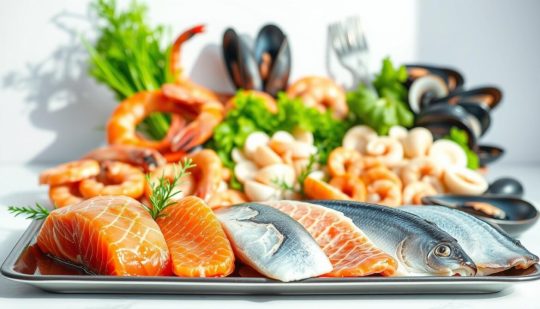
🐟 What Are the Health Benefits of Seafood?
Seafood is a powerhouse of nutrients:
Omega-3 fatty acids: Good for heart, brain, and inflammation
Lean protein: Supports muscle repair and keeps you full longer
Iodine & selenium: Support thyroid function
Vitamin D: Especially in salmon, vital for immune health
Bonus: Regular seafood intake is linked to a lower risk of Alzheimer’s.
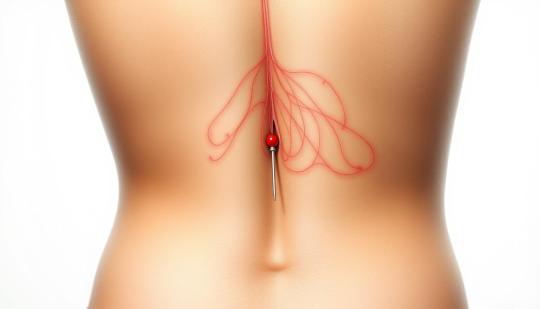
💎 Lower Back Dermal Piercings: Are They Safe?
Lower back dermal piercings, often called "venus piercings," are more than just a style statement. Here’s what to consider:
Safety: Always get it done by a licensed professional
Healing: Takes 1–3 months; requires diligent aftercare
Risks: Potential for infection, rejection, or irritation from clothing
Natural remedies like diluted tea tree oil may help soothe irritation—always check with your piercer first!

🏠 Home Remedies That Actually Work
Some home remedies have stood the test of time:
Honey + ginger: Soothes sore throats and aids digestion
Aloe vera gel: Treats burns, acne, and dry skin
Apple cider vinegar: Balances pH, supports digestion, and can help with dandruff
Always remember—natural doesn't always mean safe. Test remedies on a small area first!
🍳 Nutritious Fast Food Breakfast: Is It Possible?
Yes! Here are nutritious fast food breakfast options when you're in a rush:
Egg White Grill (Chick-fil-A): High in protein, low in carbs
Oatmeal (Starbucks or McDonald's): Ask for it without added sugar
Greek yogurt parfaits: Watch for added sugar, but they offer protein and probiotics
Breakfast burritos (customized): Choose whole grains, eggs, and veggies
Pair it with green tea or water to avoid sugary drinks.

🩸 What Are the Best Foods for Blood Type O?
For those who follow the Blood Type Diet, Type O individuals thrive on:
High-protein meals: Lean meats, seafood, and veggies
Avoid grains and legumes: Especially wheat, corn, and kidney beans
Great foods: Spinach, broccoli, seaweed, and olive oil
Limit: Dairy and caffeine, as they may not digest well
This diet isn’t for everyone, but many say it helps with energy and digestion.
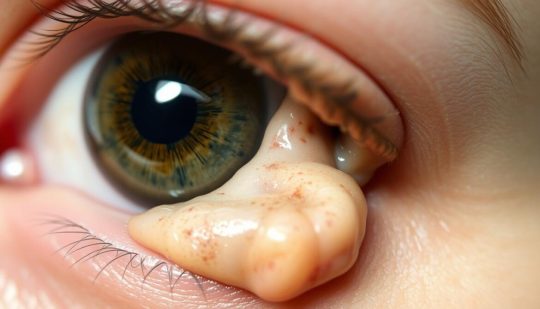
️ Eye Teratoma: What Should You Know?
Eye teratomas are rare tumors that can contain multiple types of tissue (like bone, hair, or muscle). While alarming, many are benign. Treatment often involves surgical removal. It's a reminder of how important regular checkups and early diagnosis are, even in unlikely areas like the eye.
Conclusion
Living a holistic lifestyle doesn't mean giving up modern convenience. Whether you're rocking lower back dermal piercings, seeking natural ways to manage high blood pressure, or picking a quick, healthy breakfast at a drive-thru, there are balanced, mindful options for every path.
Have you tried any of these methods or foods? Share your story or tips below!
#home remedies#eyetreatment#liverdisease#health and wellness#healthcare#health & fitness#nutrition#wellness#healthylifestyle#high blood pressure
7 notes
·
View notes
Text
On a recent Thursday afternoon, researchers Lanuza Faccioli and Zhiping Hu wheeled an inconspicuous black and white plastic cooler from an operating room at a hospital in downtown Pittsburgh. Inside was a badly scarred liver, just removed from a 47-year-old man undergoing a transplant to receive a new one from a donor.
But what if patients could avoid that fate? Faccioli and Hu are part of a University of Pittsburgh team led by Alejandro Soto-Gutiérrez attempting to revive badly damaged livers like these—as well as kidneys, hearts, and lungs. Using messenger RNA, the same technology used in some of the Covid-19 vaccines, they’re aiming to reprogram terminally ill organs to be fit and functioning again. With donor livers in short supply, they think mRNA could one day provide an alternative to transplants. The team plans to begin a clinical trial next year to test the idea in people with end-stage liver disease.
Alcohol use, hepatitis infection, and a buildup of fat in the liver can cause scarring over time. When there’s too much damage, the liver starts to fail. “Right now, if you get end-stage liver disease, it’s irreversible,” Soto-Gutiérrez says. “Well, we found that is not true. It is reversible.”
Soto-Gutiérrez and his team have been experimenting on rats and organs taken from people undergoing transplants at the University of Pittsburgh Medical Center, one of the busiest transplant centers in the US. To help design the mRNA and figure out how to deliver it to the human liver, they’ve partnered with Drew Weissman, a physician and immunologist at the University of Pennsylvania who won the 2023 Nobel Prize in Physiology or Medicine for his pioneering work on mRNA. Together, Soto-Gutiérrez and Weissman lead the Center for Transcriptional Medicine, launched in April with the goal of bringing these medicines to patients.
On the day I visited, I followed Faccioli and Hu through a maze of hallways until they deposited the freshly explanted liver at a pathology lab, where a team of scientists was anticipating the special delivery. After infusing the liver with an experimental mRNA therapy, they placed the organ in an oxygenated bath meant to maintain its function for several days.
A healthy liver is spongy and reddish-brown in color with a smooth appearance. But when the surgeons took this one out of the cooler, it was hard, marbled, and covered in bumps—evidence of cirrhosis, a type of end-stage liver disease. Over time, the man’s healthy liver cells had been replaced by scar tissue, and eventually, his liver stopped working. His only option was to get a new one.
Livers are the second most in-demand organ. In 2023, a record 10,660 liver transplants were performed in the US, driven in part by a steadily growing number of living donors. In a living liver transplant, a piece is taken from a healthy person’s liver and transplanted into a recipient. But even with this uptick in transplants, not everyone who needs a new liver receives one. Patients may have other health problems that disqualify them from a transplant, and others may die while waiting for one. In 2022, the latest year for which data is available, the Centers for Disease Control and Prevention recorded nearly 55,000 deaths due to chronic liver disease.
Living donor transplants are possible because of the liver’s unique capacity to regenerate itself—more so than any other organ in the body. In a healthy person, the liver can regrow to its normal size even after up to 90 percent of it has been removed. But disease and lifestyle factors can cause permanent damage, rendering the liver unable to repair itself.
When Soto-Gutiérrez was studying medicine at the University of Guadalajara in Mexico, his uncle died of liver disease. From then on, he became dedicated to finding a treatment for patients like his uncle. In the early years of his medical career, he noticed that some patients with scarred livers were bound to a hospital bed waiting for a transplant, while other people with cirrhosis were walking around, seemingly living normal lives. He figured there must be cellular differences in these livers.
He teamed up with UPMC transplant surgeon Ira Fox to look for transcription factors—master regulators that can dial up or down the expression of groups of genes—that can potentially reprogram injured organs. Genes rely on transcription factors to perform many essential functions in organs. Together, Soto-Gutiérrez and Fox have analyzed more than 400 failing livers donated by transplant patients. When they compared them with dozens of normal donated livers that acted as controls, they identified eight transcription factors essential for organ development and function.
They zeroed in on one in particular, HNF4 alpha, that seems to act like a main control panel, regulating much of the gene expression in liver cells. In healthy liver cells, levels of HNF4 alpha were turned up, and so were other proteins it controls. But in the cirrhotic livers they examined, HNF4 alpha was almost nonexistent.
The team needed a way to get the transcription factor into liver cells, so they turned to mRNA technology. Used in some of the Covid-19 vaccines, mRNA is a molecule that carries instructions for making proteins, including transcription factors. In the Covid vaccines, the mRNA codes for a part of the virus known as the spike protein. When injected into a person’s arm, the mRNA enters cells and kicks off the protein-making process. The body recognizes these spike proteins as foreign and generates antibodies and other defenders against it.
The Pitt team is using mRNA instead to essentially turn back time in injured organs. “What we’re proposing to do with mRNA is use it to deliver proteins that have the capacity to repair those damaged liver cells,” Weissman says. “Our hope is that we can treat end-stage liver disease and turn the livers around, maybe forever, or at least until patients can get a transplanted organ liver.” Instead of delivering instructions for a foreign protein to generate an immune response, they’re delivering the genetic code for producing a transcription factor—HNF4 alpha.
In a paper published in 2021, the approach revived human liver cells in lab dishes. The researchers have since tested the mRNA therapy in rats with cirrhosis and liver failure. They treated a group of rats every three days for three weeks while a second group served as a control. The animals that were receiving the injection of HNF4 alpha started being more active. The untreated rats continued to decline and eventually died, the expected result at their stage of disease. Some of the treated rats were still living six weeks after receiving the mRNA medicine. Those results have not yet been published in a peer reviewed journal.
The team is also testing the mRNA infusions in human livers removed from patients undergoing transplants—the process I got to observe. Unlike live rats, explanted human livers can’t be observed for weeks on end. Livers have to be retrieved quickly and infused with the mRNA treatment soon after they’re removed from the body. They stay fresh for just four days or so in a preservation fluid. Six hours after the mRNA infusion, levels of HNF4 alpha start going up and last for two to three days. When HNF4 alpha peaks, other essential liver proteins, such as albumin, start to increase as well. That’s important, Soto-Gutiérrez says, because maintaining those protein levels could mean the difference between a patient needing a transplant or not.
Ideally, Soto-Gutiérrez says the mRNA therapy would be something patients could get once a week or every other week in an outpatient facility and go back home. But initially, they’ll need to test the experimental treatment in very sick patients, likely ones that are hospitalized, to make sure it’s safe. The team is gathering data from the rat and human liver experiments to submit a clinical trial application to the Food and Drug Administration in the coming months.
While livers are the first target, Fox thinks other injured organs may be amenable to this approach. “We’ve been wondering whether the same process might be taking place in other organs,” he says. Currently, the team is searching for similar transcription factors in lungs with chronic obstructive pulmonary disease and kidneys with chronic kidney disease.
Josh Levitsky, a liver transplant specialist at Northwestern University who isn’t involved in the work, says new treatments for chronic liver disease are sorely needed. Current therapies can help slow down scar tissue buildup and ease symptoms but don’t address the underlying disease. “The concept of reprogramming and being able to reverse liver failure could be really game changing if it were to pan out in clinical studies,” he says.
But lots of questions remain. How much damage could be reversed? Would patients need to be on the therapy indefinitely? Or would their livers rebound enough to go off it? Could a liver ever be restored back to normal?
“It certainly has a lot of promise,” Levitsky says, “but the clinical development is going to take a long time.”
20 notes
·
View notes
Text
Artificial kidneys for people with kidney failure may be closer than we think
More than 500k people in the US require dialysis every week due to kidney failure. Some of those people are able to receive organ transplants, but the waiting list is incredibly long and only about 20k people receive transplants every year. On top of that, a person's body can reject the transplanted organ, and even if it is successful the patient will have to take immunosuppressant drugs for the rest of their life.
However, scientists at the University of California San Francisco hope that can be changed. They have created a bioreactor, a sort of artificial organ that can safely perform the functions of a kidney. It is connected directly to the blood vessels and veins, allowing passage of nutrients and oxygen like the actual kidney would. This bioreactor was tested using a type of kidney cell called a proximal tubule cell, which regulates water. These cells are encased in a silicon membrane with nanopores, which allows the cells to do their job while preventing the body's immune system from identifying and attacking them. These bioreactors were tested in pigs, and after a week the animals experienced no ill effects or rejection.
The next steps will be expanding to month long trials, and including more different kinds of cells in the reactor to perform more of the kidney's functions. Though this technology is still far from being perfected, this is a huge step in the direction of treating kidney disease far more easily and effectively!
#science#stem#science side of tumblr#stemblr#biology#biochemistry#studyblr#medicine#health#healthcare#kidney transplant#kidney diseases
76 notes
·
View notes
Text

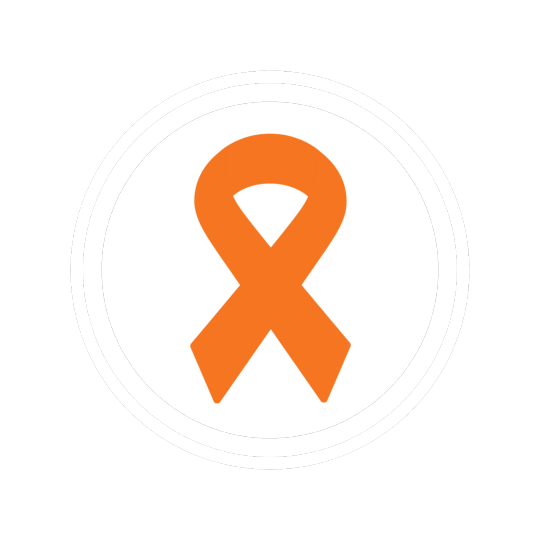

Leukemia and Lymphoma Awareness Flags!!
This flag was designed by us, as we currently have a family member with Leukemia and wish to bring awareness to this kind of cancer.
color meaning:
#FF2D34: Myeloma
#00DC0E: Non-Hodgkin Lymphoma
#FF8C2E: Leukemia
#D12DFF: Hodgkin Lymphoma
Below is information all about Leukemia and Lymphoma Cancers.
Leukemia and Lymphoma are both cancers that are not associated with a tumor. Lymphomas are cancers that affect the lymph system and start in cells called lymphocytes. Leukemia is a cancer of the early blood-forming tissues, including your bone marrow and lymph system.
There are many types of lymphoma. Some grow and spread slowly and some are more aggressive. There are two main types of Lymphoma:
1. Hodgkin Lymphoma is cancer that starts in the B lymphocytes (B cells) of the lymph system. Your lymph system helps you fight infection and control the fluids in your body.
2. Non-Hodgkin Lymphoma (NHL) is cancer that starts in the lymphocytes anywhere lymph tissue is found:
Lymph nodes
Spleen
Bone marrow
Thymus
Adenoids and tonsils, or
The digestive track.
Leukemia typically involves white blood cells, the cells that are your infection fighters. Leukemia can be divided into categories: fast growing (acute) and slow growing (chronic); and by which white blood cells are affected:
Acute lymphocytic leukemia (ALL)
Acute myelogenous leukemia (AML)
Chronic lymphocytic leukemia (CLL
Chronic myelogenous leukemia (CML)
A screening test is used to detect cancers in people who may be at higher risk for developing the disease. With leukemia and lymphoma, there are no early detection tests. The best way to find them is to be aware of the symptoms:
Swollen lymph nodes which can appear as a lump in the neck, armpit or groin;
Fever
Night sweats
Weight loss without trying, and
Fatigue.
Leukemia can have similar symptoms but also can include:
Easy bleeding or bruising;
Recurring nosebleeds; and
Bone pain or tenderness
Myeloma is cancer of the plasma cells. Plasma cells are white blood cells that produce disease- and infection-fighting antibodies in your body. Myeloma cells prevent the normal production of antibodies, leaving your body's immune system weakened and susceptible to infection. The multiplication of myeloma cells also interferes with the normal production and function of red and white blood cells. An abnormally high amount of these dysfunctional antibodies in the bloodstream can cause kidney damage. Additionally, the myeloma cells commonly produce substances that cause bone destruction, leading to bone pain and/or fractures.
Myeloma cells are produced in the bone marrow, the soft tissue inside your bones. Sometimes myeloma cells will travel through your blood stream and collect in other bones in your body. Because myeloma frequently occurs at many sites in the bone marrow, it is often referred to as multiple myeloma.
Signs and symptoms of myeloma include the following:
Hypercalcemia (excessive calcium in the blood)
Anemia (shortage or reduced function of red blood cells)
Renal damage (kidney failure)
Susceptibility to infection
Osteoporosis, bone pain, bone swelling, or fracture
High protein levels in the blood and/or urine
Weight loss
In 2022, more than 62,650 people are expected to be diagnosed with leukemia. In addition:
Leukemia accounts for 3.6% of all new cancer cases.
The overall 5-year survival rate for leukemia has more than quadrupled since 1960.
62.7% of leukemia patients survive 5 years or more.
The diagnosis of leukemia requires specific blood tests, including an examination of cells in the blood and marrow.
Treatment and prognosis depend on the type of blood cell affected and whether the leukemia is acute or chronic. Chemotherapy and blood and marrow transplant are often used to treat leukemia.
If you wish to read more about Leukemia and Lymphoma cancer, please visit this website!
#leukemia#lymphoma#blood cancer#leukemia and lymphoma society#leukemia awareness#lymphoma awareness#blood cancer awareness#pro endo#pro endogenic#endo friendly
12 notes
·
View notes
Text
So I went out to the pharmacy, to restock on antihistamines, ibuprofen and get some fomatadine to try out.
Mostly I've been having thoughts about how the antihistamines helped specific symptoms but just didn't impact others at all, which was why I assumed those symptoms weren't allergies.
I still think this is a multi-system autoimmune attack stacking with weak organ function to cause things like gout and etc, and then mineral deficiencies caused by me trying to flush out the kidney problems, but it's the trigger or initial cause I am trying to nail down. It could have been corona exposure and the damage from that bladder test, and ALSO a new food allergy. Basically my body is very stupid about everything...
But none of my food allergies result in like acute anaphylaxis, they all act *mostly* like a non-ige mediated allergy. I say mostly because I get less digestive symptoms and more breathing symptoms and swelling than you would expect for that, and some really immediate vomiting for some, and migraines for most, but like, not a lot of actually life threatening breathing problems, and often very delayed full body reactions like hives.
I have noticed them being milder if I take antihistamines around the foods I react to, but not by much. Mostly it helps the breathing issues and scratchy throat.
I can't get google to say whether any type of anti-histamine has ANY effect at all on non-ige mediated allergies. They say adrenaline and antihistamines aren't -necessary- but they don't say whether it helps AT ALL. I'm just looking for a way to reduce the symptoms or confirm the cause. but all any source will tell me is that an elimination diet is the only strategy. Like okay, great but how do I make my body livable while I am waiting for the food reaction to pass? I don't have anyone to help me, I HAVE to be able to get up and feed myself.
Meanwhile, even before my pathetic hobble in the cold this morning I had started feeling baselessly optimistic about recovering again, and my pupils started dilating almost like a normal person's again, instead of being pinpoints 24/7 in the darkness of my apartment. The only thing I changed at that point was trying a single loratadine again to see if it calmed anything back down from the recent flare-up. I have no idea if it did, but it might actually be the loratadine that's been responsible for my weirdly improved mood and weirdly normal eye function at various points recently. Some kind of autoimmune effect on my nerves and neurology might be responsible for the perpetually tiny pupils and mild consistent depression [more frustrated mood than a low one]. It could all be coincidence, but it seems to be forming a pattern of repeatable results.
I haven't tried the fomatadine yet for pmdd or anything else, but I am starting to think some people have a seriously observable link between their histamine levels and mood.
It's a shame loratadine is so fucking bad for your kidneys, because I think for me it's functionally an anti-depressant, when actual anti-depressants did nothing and get metabolized too quickly causing weird symptoms.
It's also a shame that walk probably will make the swelling in my legs a billion times worse... But on the bright side, ibuprofen is the safest nsaid for your kidneys if you have to take one, and even judging by the drug information, I'm not sure it's hard on your kidneys so long as they are still at a stage where they are processing a normal amount of fluids at a normal or faster rate. I might just manage the swelling while I avoid high histamine foods, and cut out tilapia, and see if I recover from here. I'm peeing normally, the ph of everything is safe and close to neutral, and I think I have managed to get myself fully un-jaundiced already. I'd be glad to not be tempted with aspirin anymore though. I suspect neither my kidneys or my liver like it, but it was all I had, so I had pretty much stopped treating the swelling at all. And if my kidney problems are being caused in part by inflammation, that's maybe not a good thing.
So hopefully that means I can get back to some hard-core cleaning and organizing and get it all done BEFORE someone can even decide to have an issue with anything... Problem solve the city's most stupid, half-baked, apartment design. I think it would somehow actually help to build a fake wall [as a piece of furniture]??
In the meantime, my dishes and laundry, etc are fully caught up, and between yesterday's loratadine dose, the end of my period, the walk outside, and the fresh spring air and sun from my window, I'm feeling okay and mostly mentally well-adjusted and optimistic. Simply not nearly as anxious or frustrated as I would normally expect to feel under these circumstances. I have pie for breakfast and snacks in the fridge and chili and rice to eat.
I figured out how to get in and out of a sports bra without having to lift my arms over my head.
Anyway, if it's a delayed reaction to tilapia, it explains how I got so sick so fast and for so long, because I was eating platters of the stuff for like a month solid, and kept eating it after I got sick. I just kind of figured that if I tried it and didn't immediately feel anything, and didn't get a rash or migraine or digestive symptoms in the next 48 hours, it was probably fine.
It's so sad too because it tastes like all the seafood I couldn't enjoy before, and it's the one fish that's really practical to farm in Canada if ever managed to get a big enough pond. And it's cheap.
Also not 100% sure I am not allergic to milk or eggs, but now is not the time to test that. I still have 3.5 cheesecakes to eat. And I just had to give up rare steak due to bird flu, so I don't feel like losing cheesecake too.
4 notes
·
View notes
Text
Polycystic kidney disease (PKD) is an inherited disorder distinguished by the growth of lots of cysts in the kidneys ("Polycystic Kidney Disease" 1). In the majority of cases, this genetic disease is passed down through families as an autosomal dominant trait. If a parent is the carrier of the gene, there is a fifty percent chance for the children to develop the disorder ("Polycystic Kidney Disease"). The kidneys are two organs. Each kidney is about the size of a fist and is found in a human being's abdomen (upper part) towards the back. Extra fluid and wastes present in the blood are filtered by kidneys forming urine as a result. Kidneys also help in the regulation of amounts of certain essential substances in the body. When cysts are formed in the kidneys, they are full of fluid. The normal structure of the kidneys thus becomes greatly enlarged due to the PKD cysts. As a consequence, kidney function is reduced which ultimately leads to kidney failure ("Polycystic Kidney Disease" 1). When kidneys fail due to PKD, the need of dialysis or patient kidney transplantation becomes inevitable. Polycystic kidney disease also causes cysts formation in the liver. Other organs in the body (particularly the blood vessels in brain and heart) also get affected with this genetic disease. The doctors distinguish PKD cysts from the harmless cysts after checking and examining the number of cysts and the complications caused by them ("Polycystic Kidney Disease" 1). Polycystic Kidney Disease exists in two major hereditary forms i.e. Autosomal Dominant PKD and Autosomal Recessive PKD. About ninety percent of all cases of PKD are Autosomal dominant PKD making it the most common form of PKD whereas Autosomal recessive PKD is the rare form of PKD ("Polycystic Kidney Disease" 1). Although it is a rare type but is very grave and gets worse swiftly. It can cause serious lung and liver disease, end-stage kidney disease, and sometimes even death in early life ("Polycystic Kidney Disease"). Method(s) of Diagnosis Polycystic Kidney Disease is generally identified by kidney imaging studies. Ultrasound is the most common type of diagnostic kidney imaging. Other than this, computerized tomography (CT) scans or magnetic resonance imaging (MRI) are the methods that are used for diagnosing this disease. The beginning of kidney damage and the speed of its progression can vary in Autosomal dominant PKD. Depending on the age of the patient, the findings of kidney imaging can also show a discrepancy in a considerable manner. Fewer and minor cysts are mostly found in the kidneys of younger patients. Therefore, a particular criterion has been developed by the doctors for the diagnosis of the disease keeping in mind the patient's age ("Polycystic Kidney Disease" 2). Genetic tests are also a type of diagnosis by which mutations in the autosomal dominant PKD genes (PKD1 and PKD2) are detected. The genetic test is also helpful in determining whether a young PKD family member can securely give a kidney to a family member with the PKD ("Polycystic Kidney Disease" 3). Thus, Abdominal CT scan, Abdominal MRI scan, abdominal ultrasound and Intravenous pyelogram (IVP) are the four main methods to detect PKD ("Polycystic Kidney Disease"). Symptoms and Complications Both children and adults can develop autosomal dominant PKD. However, mostly adults have this kidney disease. It is not until the middle age that the symptoms appear in many cases. Some people even do not have PKD symptoms ("Polycystic Kidney Disease"). The most common symptoms of Polycystic Kidney Disease are headaches, back pains, side pains (between the ribs and hips). The pain can be short-term or constant, mild or severe. Other complications that people with autosomal dominant PKD can experience include "urinary tract infections -- specifically, in the kidney cysts, hematuria -- blood in the urine, liver and pancreatic cysts, abnormal heart valves, high blood pressure, kidney stones, aneurysms -- bulges in the walls of blood vessels in the brain, diverticulosis -- small pouches bulge outward through the colon" ("Polycystic Kidney Disease" 2). Drowsiness, joint pain and nail abnormalities are other symptoms that may happen with PKD ("Polycystic Kidney Disease"). Treatment Even though autosomal dominant PKD has no cure, proper treatment of this genetic disease can relieve symptoms and make life longer. Cyst infection, bleeding, kidney stone etc. can cause pain in the kidney area. At first, the doctor will assess the causes that are contributing to the pain in order to direct the patient about treatment. If it is evaluated as chronic pain due to the enlargement of cyst, over-the-counter pain medications (aspirin or acetaminophen) may be initially suggested by the doctor. If the pain is severe, it can be relieved by the means of surgery (for shrinking cysts). It must be noted that surgery may only provide an impermanent relief and does not reduce the progression speed of the disease toward kidney failure ("Polycystic Kidney Disease" 4). The urinary tract infections due to autosomal dominant PKD can be treated with antibiotics. Urinary tract infections can cause cyst infections which are difficult to treat as a lot of antibiotics do not make a way into the cysts for curing them. The effects of autosomal dominant PKD can be slowed down by keeping blood pressure under control. High blood pressure can be kept under control by changing the lifestyle and taking a variety of medications. In many cases, blood pressure can be kept under control just by taking proper diet and doing proper exercise ("Polycystic Kidney Disease" 4). Thus, the main goal of treatment is controlling PKD symptoms and preventing complications. Although it is not an easy task to control the high blood pressure, controlling it is the most imperative part of PKD cure. There may also be a need of removing one or both kidneys through surgery. Moreover, end-stage kidney disease may be treated by dialysis or a kidney transplant ("Polycystic Kidney Disease"). Method(s) of Prevention At present, there is no treatment that can put a stop to the formation or enlargement of cysts ("Polycystic Kidney Disease"). Directions for Future Research The scientists today have been able to recognize the processes that activate the PKD cysts formation. The field of genetics has advanced tremendously due to which the understanding concerning the abnormal genes that are responsible for autosomal dominant and autosomal recessive PKD has increased. Recently, researchers have been successful in discovering quite a lot of compounds that have emerged to slow up cyst development in mice with the PKD gene. A number of such compounds are in experimental testing in human beings. Scientists are hoping that further testing will make safe and effective treatments possible for humans who have polycystic kidney disease ("Polycystic Kidney Disease" 7). Clinical studies that have been done recently about the autosomal dominant PKD are discovering innovative imaging methods for tracking the cystic kidney disease development. As such methods use MRI, it is becoming so fruitful for scientists to design improved clinical experiments for fresh treatments of autosomal dominant PKD ("Polycystic Kidney Disease" 7). References "Polycystic Kidney Disease." NIDDK. U.S. Department of Health and Human Services, n.d. Web. 4 Jan 2013. . "Polycystic kidney disease." National Center for Biotechnology Information. A.D.A.M., Inc., 20 Sept. 2011. Web. 5 Jan. 2013. https://www.paperdue.com/customer/paper/polycystic-kidney-disease-104782#:~:text=Logout-,PolycysticKidneyDisease,-Length4pages Read the full article
2 notes
·
View notes
Note
Since i know you LOVE the man...
What creepypastas (or internet horror) interests Medic? Give us all the details about how he interacts with that media hehe
Medic and Creepypastas!
————————————————————
What a way to break up the absolute trauma this man has been going through on my blog.
————————————————————
Spoilers for these Creepypastas, probably. The Russain Sleep Experiment, Eyeless Jack, Candle Cove, and SmileDog.exe
ALSO TWS: MENTIONS OF BLOOD, GORE, VIOLENCE, AND DEATH
————————————————————
As for interacting with creepypastas, he's so medical with it. He's analyzing it from every angle. He can't actually understand the horror because most of the things that would scare us is just fascinating to Medic. Also, I think he once tried to enter the fandom and was horrified lmao.
————————————————————
His first introduction to creepypasta was the Russian Sleep Experiment. (Is this anyone else's gateway drug? It was mine, lmao) He was probably looking up youtube videos of the most disturbing experiments for fun, or to see if he could attempt any of them, and then he saw that one fucking picture. Instant click. Even though he realized instantly that it was a work of fiction, he continued to watch the video, finding himself insanely interested in the story. Debating the logistics in his head and noting down the most interesting parts. Figures he could make a type of gas with chemicals designed to keep people awake, even make it better so no one goes batshit insane. Ultimately, he decided against it, as he couldn't risk the team ripping open their body's or their skin falling off in sheets. It'd be more effort than it's worth. Imagine the mess he'd have to clean up! He's only one man after all.
————————————————————
Eyeless Jack confused him. Sure, it's a fictional story, but how could a person, fictional or otherwise, bot wake up during such an invasive procedure. Let alone not bleed out due to a general lack of surgery skills. Does understand the want to eat human organs. He's just a little curious, you know? So he can't blame a guy for eating peoples kidneys. Even though he figures that's not the best organ to eat due to its functions, buts that's neither here nor there. May or may not have asked the mercs to volunteer for a little test of sorts while they were sleeping. No one accepted his offer. But a few might be convinced by some sly offers of being pocketed for the next few fights, judging my the screaming coming from one of the mercs room.
————————————————————
Candle Cove is an interesting thought experiment to him. He wonders through the entire story if it was simply a case of a shared memory, people thinking they remember something, or if the characters were just lying. He wanted to test this, figuring that a small bit of psychological trickery was okay. He wanted to see if people would latch onto the idea of Candle Cove being real. Subtly brings it up, not being too shocked when Scout is the first one to question if he ever saw the show, claiming it seemed familiar. Eventually, the others followed. Medic sat in the corner, watching them taking notes as they debated the finer details. Eventually, the other mercs noticed he wasn't adding to the conversation despite being the one to bring it up.
"Oh, ja, I lied it's not real. I just wanted to test a theory. Danke, for proving my theory, goodbye now." And he just leaves. The other mercs have a moment of being baffled and concerned at the fact that they had just made fake memories. Memories they actually believed. They hope Medic doesn't try this again.
————————————————————
SmileDog.exe would honestly be Medic's pet if he was a real. But alas, he can only go off the story. He wonders if the image could really affect people in the way claimed. That image could strike someone so deeply that they find themselves seeing it all the time. He's a little ashamed to admit he stared at the photo for a good hour to see if it would appear in his dreams. He was disappointed to find it didn't. He finds it laughable that people wouldn't just share the picture of Smile Dog to save themselves from death. It seems like a simple solution. Even if it is prank mail, the second he starts seeing it everywhere, he'd forward the message. (He wouldn't, I think he'd actually rather die than ruin his reputation by sending chain emails, lmao)
————————————————————
Sorry if this is more along the lines of "He wouldn't fucking do that!" Concidering Medic isn't doing a whole lot of testing on his teammates, and I know a lot of people think he would have just done them, but I think he values the consent and sometimes the mental and physical wellness of his teammates. Sure he'll put them in some pain for a surgury of two, but he'd never directly ignore them saying no to one of his experiments. At least I think so.
————————————————————
Uh, I hope you like this! I actually haven't thought about creepypastas in a while 😭 I kinda miss that time in my life, but at the same time, it was so bad, lmao. Sorry it's not super long, and might not have been exactly what you were asking for, but I was super excited to write this and I'm super glad it's done!
Working through asks! Uh, the Mercs losing a close friend on the battlefield is next, then some other asks. I'm sorry for the long pauses in between!
29 notes
·
View notes
Text
Wow. The last few days have been a whirlwind. If I tried to type it all out this post would be insanely long. The shortened version is that my NIPT bloodwork came back flagged for Turners Syndrome (surprise, baby is a girl!). All physical traits that would be expected to be seen on an ultrasound to confirm Turners Syndrome weren't present at my NT scan. This was comforting and gives us more hope that it is a false positive (60% of NIPT flags for Turners are a false positive). The only way to completely rule it out as an issue is to do an amnio test at 16 weeks, so that is exactly what we will do. Until then we wait and hope for the best.
Turners isn't inherently a terrible diagnosis and many Turners babies have a very high functioning life. The biggest concern is heart and kidney defects and the fact that only 1% of Turners babies survive through birth. So yeah, don't love that.
In the last 24 hours I have met with my MFM and a genetic counselor and both are feeling optimistic. I'm holding onto that as I wait out these next few weeks for more testing and information.
I'm so tired of all the hurdles though. Pregnancy is already fucking hard without this added stress.
#personal#high risk pregnancy#Turners Syndrome#hoping for a false positive#I just want my baby to be healthy
15 notes
·
View notes
Text
Modern Monsters 7: Frankenstein’s Monster
Another inspired by @purrlockholmesbooks’s request!
Real life got VERY busy this week, plus my mind just kept spawning lore for this guy and his creator, so when I sat down to write it, the ideas were getting in each other’s way like the Three Stooges in a doorway. Then I sat down to put it all in order for a post last night and fell asleep. Sorry >_<
Onwards!



Having existed for over 200 years, and the vast majority of that with a much less vocal conscience than he first started out with, Victor (last name dependent on which alias he was using at the time) created more than one monster.
After his original Creature resurrected Victor Frankenstein, only to effectively say, “Dad, I’m sorry about all of that, but seriously - never contact me again,” the doctor was left alone and lonely. He argued with himself about the ethical implications of what he might be putting any new creation through, as well as what he might unleash upon the world with its birth, as his knowledge and technological capabilities had only grown since then.
That only lasted about ten minutes before he moved on and started on his next project anyway.
All told, over the years, Victor’s built quite a dynasty. Literally. He never remembers exactly how many children he has, even though each one from the second onwards lived with him for at least a few years before striking out on their own. Their cohabitation was necessary for him to collect data on the relative success of each experiment, requiring lots of physical and mental testing and direct, extensive comparison of each against their siblings, which he would usually record by dictation in his test subject’s presence.
Victor is never sure why his children don’t seem to want to speak to him much.
The only one currently in very regular contact is the youngest, who Victor sacrificed some of his own tissue to build. Egotist that Victor is, this one is his very best attempt at a superhuman (so far) - a bit of cloning, a dash of modern prosthetics principles, a lot of gene manipulation, and a solid base of Victor’s own techniques have created a passably human creature with some hidden talents.
Victor’s parenting, if it can be called that, has created a passably functioning young adult with severe anxiety, people-pleasing tendencies, and self-worth issues. All the stress does make a person a bit scatty - he’d forget his head if it wasn’t screwed on, so he tries not to switch that particular body part around too often.
He does share his father’s love of knowledge for its own sake, and so has spent several years in his chosen university. He has changed his mind on what, exactly, he should focus his research on almost as often as he has switched up his detachable body parts. And he’s done that often, since Victor sent him off with a variety to choose from. University and the internet have allowed him to gather a circle of like-minded close friends, who would all tell you he is such a sweetheart; the type to give you the shirt off his back, or a kidney, if he thought you had the slightest need. He hasn’t mentioned his ability to regenerate entire organs to them just yet, though.
He donates at the same university hospital his dad works at, since his dad’s dedicated shifty-business team can be trusted to keep his real medical records under wraps and his real name off any “posthumous” donations.
His dad liked the idea of naming at least one of his children Frankie Stone, what with the Frankenstein name being impossible to use openly and the bloodline being otherwise dead. However, university is a time to reinvent oneself, and our student prefers to go by his middle name now.
He’s just always liked the sound of Shelley as a nickname.
~~~
Organ donor cards, understandably, don’t usually have loyalty stamps. One of the nicer shifty-business nurses presented Shelley with the Frankensteinian organ donor register/cafe loyalty scheme card monstrosity pictured here.
It could just be a bad photo, but I do like the bit of trivia that the monster in the book actually had yellowed skin rather than the green we now think of as traditional, so if you feel like Shelley has a bit of a sallow tint, I leave it to you to decide.
This was a “simple” illustration that took forEVERRRRR to sort out. I’m still figuring out half the tools on this app. Just pretend he takes really good care of this card since I didn’t have the energy left to make it look appropriately weathered.
~~~
If you read this far: thank you and hope you enjoyed it! I have one more instalment planned featuring Shelley and his dad, which will hopefully go up sometime in the next few days.
Oíche Shamhna shona daiobh!
Happy Halloween!

~~~
Modern Monsters series
Modern Monsters 1: Dullahan
Modern Monsters 2: Kelpie
Modern Monsters 3: Kuchisake-onna
Modern Monsters 4: Cuca
Modern Monsters 5: Vampire
Modern Monsters 6: Dr Frankenstein
Modern Monsters 7: Frankenstein’s Monster
Modern Monsters bonus: Frankenstein, Monster
Modern Monsters 8: The Scissorman
Modern Monsters 9: Lesser Dragon (Dragonet)
#modern monsters series#s a bailey#original poem#original illustration#frankenstein#frankensteins monster#frankenstein au#poem of the day#spooky season
2 notes
·
View notes
Text
hi guys! so i wanted to give you all this update as to why i have not been posting as much. for the past month i have been working at my job diligently, and at the same time ultimately concerned with my health and wellbeing. i know i made a post a while ago, saying that i was worried about my health and my kidney function, because i am a type 2 diabetic and kidney disease is common in my family. i have visited my new primary care doctor (for those who do not live in the US a primary care doctor is a healthcare provider that practices in general medicine and they are the individual i can go to to get check ups, vaccinations, referrals to specialists etc.) and a blood test as well as a urine test was done just last week.
the results of the blood test, my primary care doctor told me were fine. my urine test, to me told a different story, i noticed that my creatinine in my urine was low. it was at 17 when the reference range is 20 to 275 according to the lab test. anyways, i didn't ask them about my creatinine levels yet because i will be doing another visit with them at the end of this month to discuss over my results and what we will be doing as patient and doctor to make sure that i will be ok.
my blood sugar levels have been excellent. my respiratory is fine. my heart beat is normal. however i just have a really huge concern for my kidney function. until i get to see a kidney doctor who will do a test and the test informs me that i am well then i won't be worrying anymore. right now i am constantly stressing about my kidney function, i have been trying to distract myself with trying to finish writing requests, watching new anime shows, and going to the gym to put my mind off of it, but at the end of the night when my head hits my pillow it is all that i am thinking about.
i am writing this post to you guys, my followers and new followers, because i want for you all to know that i am still here. im still around, and i am trying my hardest to fulfill requests in my inbox and drafts. i am suffering right now from a really bad case of writer's block and stress. i think that is better to be transparent with you guys, and to let you all know what is going on with me.
i feel really bad that im not writing as often as i should be. i just hope, pray, and wish that this writer's block will go away and i will start writing again.
25 notes
·
View notes